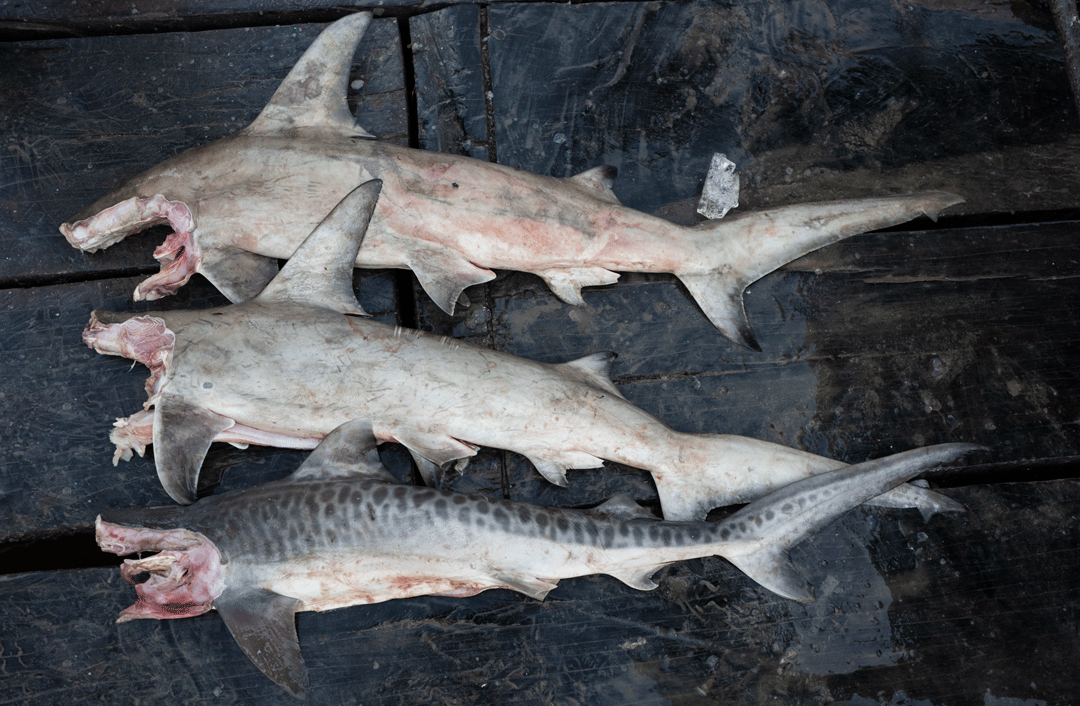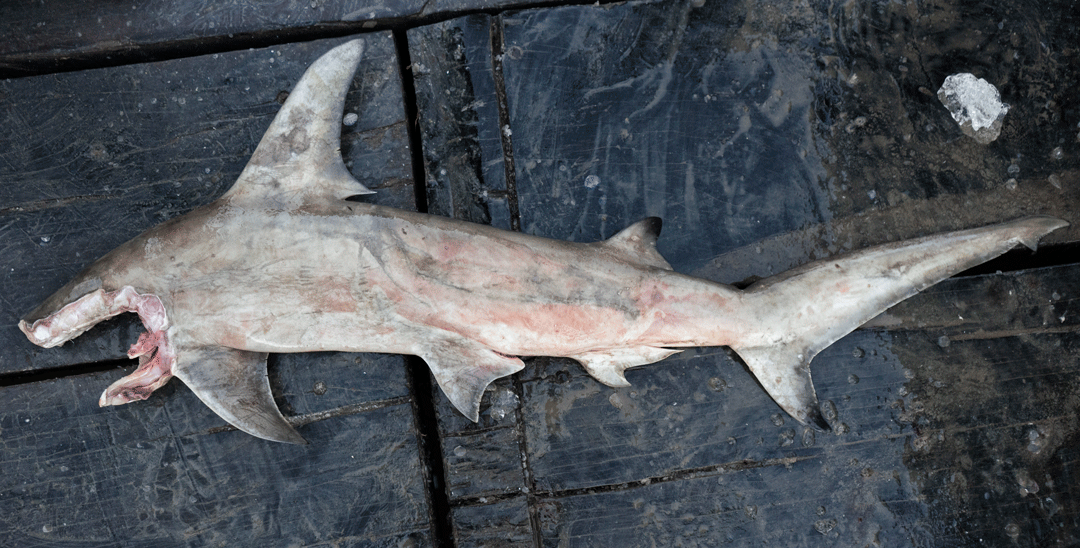From the boat to the vote: basic fishery data to inform CITES authorities in Guyana
When I embarked for my first field trip to Guyana, I did not know what to expect. All I knew is that it was a small developing country in South America, that was formerly a British colony, with a highly productive coastline due to the input of nutrients by the Amazon river. But nothing could have prepared me for what I found in terms of shark fisheries and the challenges ahead.

Photo © Diego Cardenosa
My first visit to the largest landing site in the country (Meadow Bank Wharf), at three in the morning, in complete darkness was intimidating. Once you step out of the taxi, you immediately realize how busy it is, even that early in the morning. First, you have to walk through a series of vendors at each side of a muddy road at the main entrance where fresh fish from all kinds and headless sharks, with all their fins attached, are sold to the public. Then, large trucks on both sides of the road are loaded with fish, mostly grey snapper (Cynoscion acoupa) and red snapper (Lutjanus campechanus). A little further into the compound, you have to walk through more vendors that clean and sell fish before you reach the main dock. At the dock, you can see many boats all packed with large gillnets and fish and sharks being landed in large numbers.

Sampling in Guyana. Photo © Diego Cardenosa
The first interviews I conducted with the fishermen were awkward and full of distrust; they did not know me, and later I discovered that I was the first person they’ve ever had come to the docks and ask questions about sharks. They wondered ‘what does this Colombian dude want from us?’ After visiting and working with them for a full week, the distrust disappeared, they became very friendly and cooperative, and I was able to gather valuable information about their fishing operation and the shark species being caught.

Diego conducting interviews. Photo © Diego Cardenosa
All surveyed boats used very long gillnets (nylon or polyethylene) mainly used to target grey snapper, due to its valuable meet and the increasing demand for their fish maw or swim bladder by Chinese traders. Although, most fishers also catch sharks due to their apparent high abundance and high demand for their meat in the local markets. Among the most common species identified by the interviewed fishermen were blacktips (Carcharhinus limbatus), scalloped hammerheads (Sphyrna lewini), tiger sharks (Galeocerdo cuvier) and sharpnose sharks (Rhizoprionodon spp.). Further DNA barcoding analysis also revealed large numbers of the smalltail sharks (Carcharhinus porosus) were being landed. My preliminary data suggests that large numbers of coastal sharks are being landed daily by the Guyanese artisanal fishery and that there is a large demand for their meat in the local markets. An interesting finding was the abundance of the smalltail shark in Guyanese waters. This species is Critically Endangered with significant declines across their habitat range, and this makes the Guyanese stock one of the last remaining ones in the world.
This visit highlighted the enormous conservation obstacles that lie ahead. A few of the major obstacles are:
- The use of extremely long gillnets by the entire artisanal fishery that catches large numbers of highly threatened shark species as bycatch,
- The lack of monitoring of the local fishery,
- The large levels of poverty in the country and the high demand for cheap protein such as shark meat,
- The environmental conditions in Guyana, eg. murky brown waters, which do not allow for alternative livelihoods, like ecotourism.

Photo © Diego Cardenosa
In the upcoming months, I will keep working alongside the local authorities to investigate the rest of the supply chain and level of international trade. I will also try to find potential solutions to some of the challenges mentioned above, starting with the development of long-term landing site surveys.
